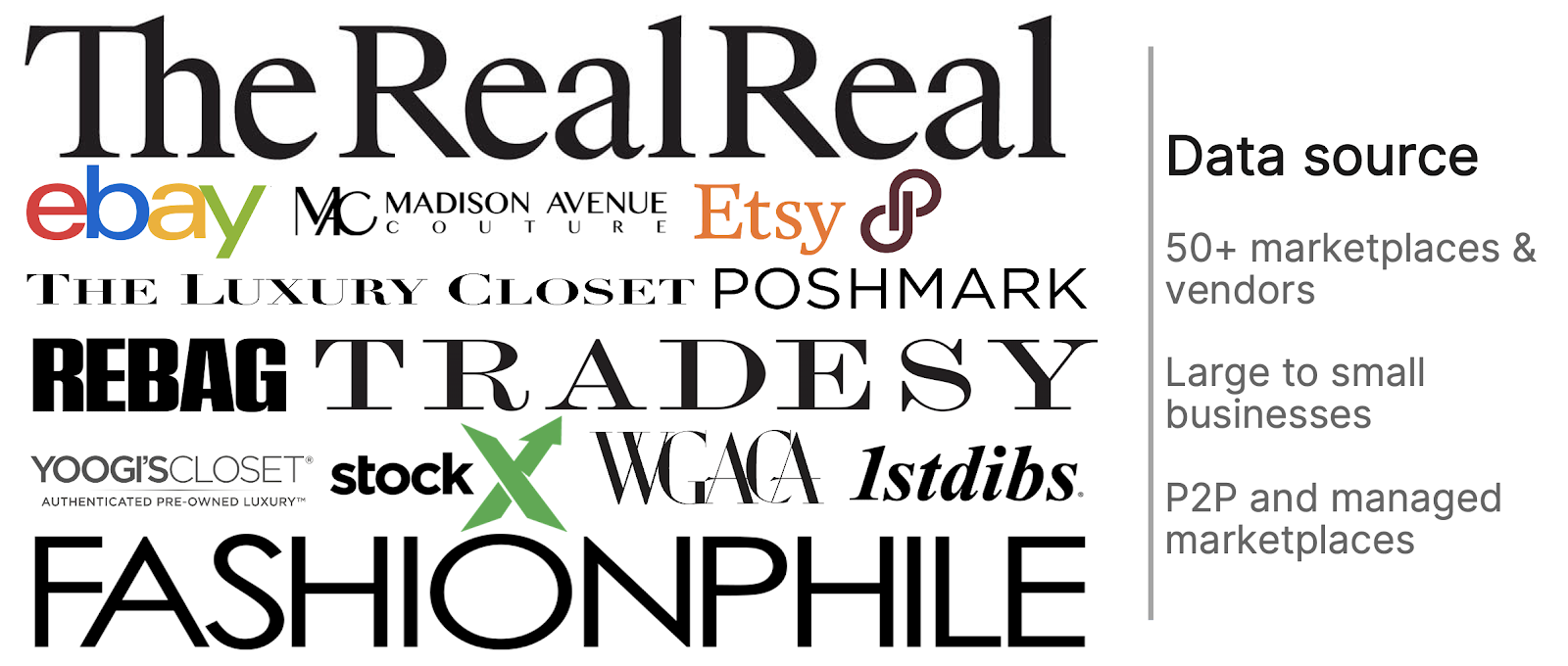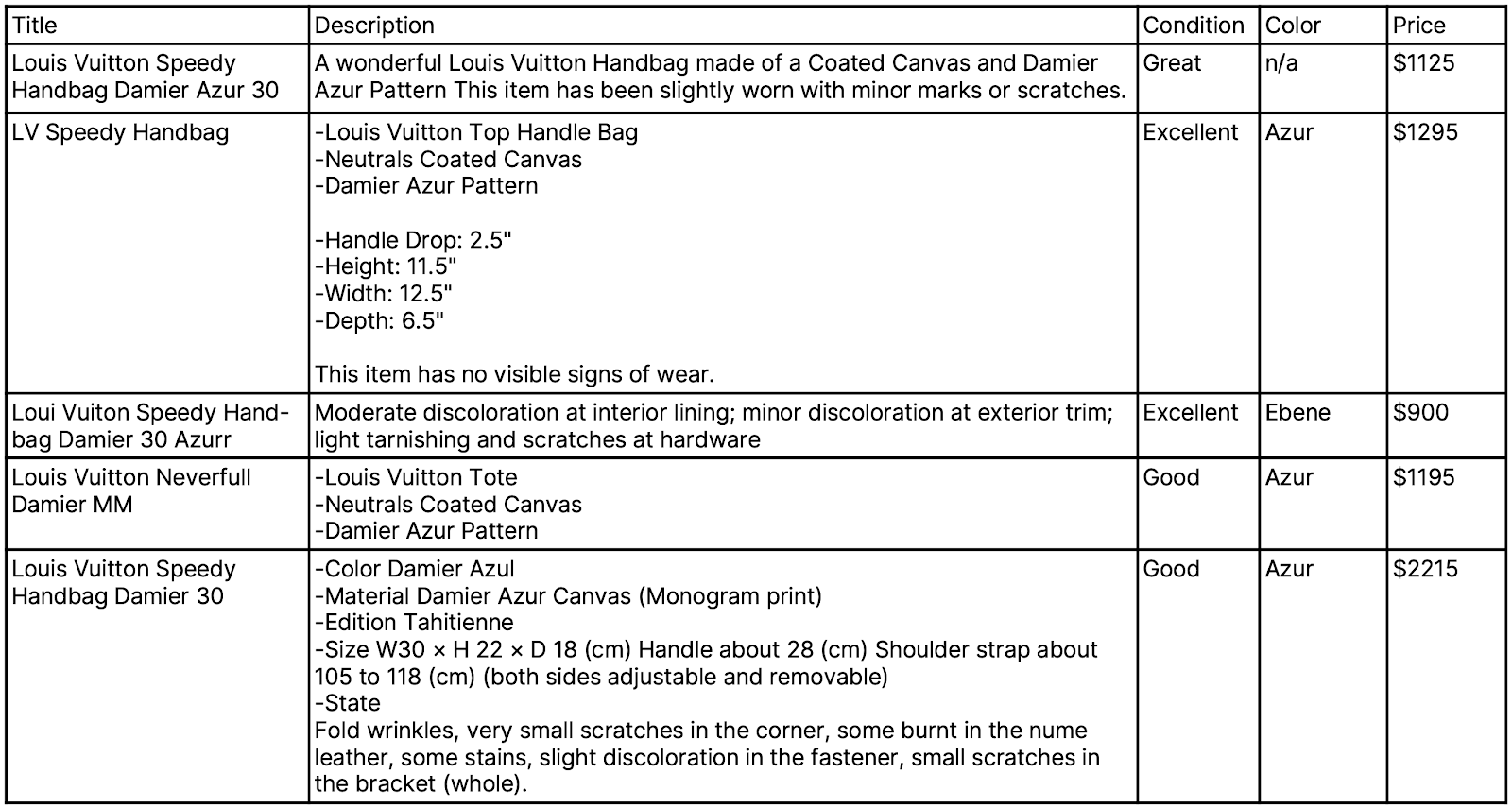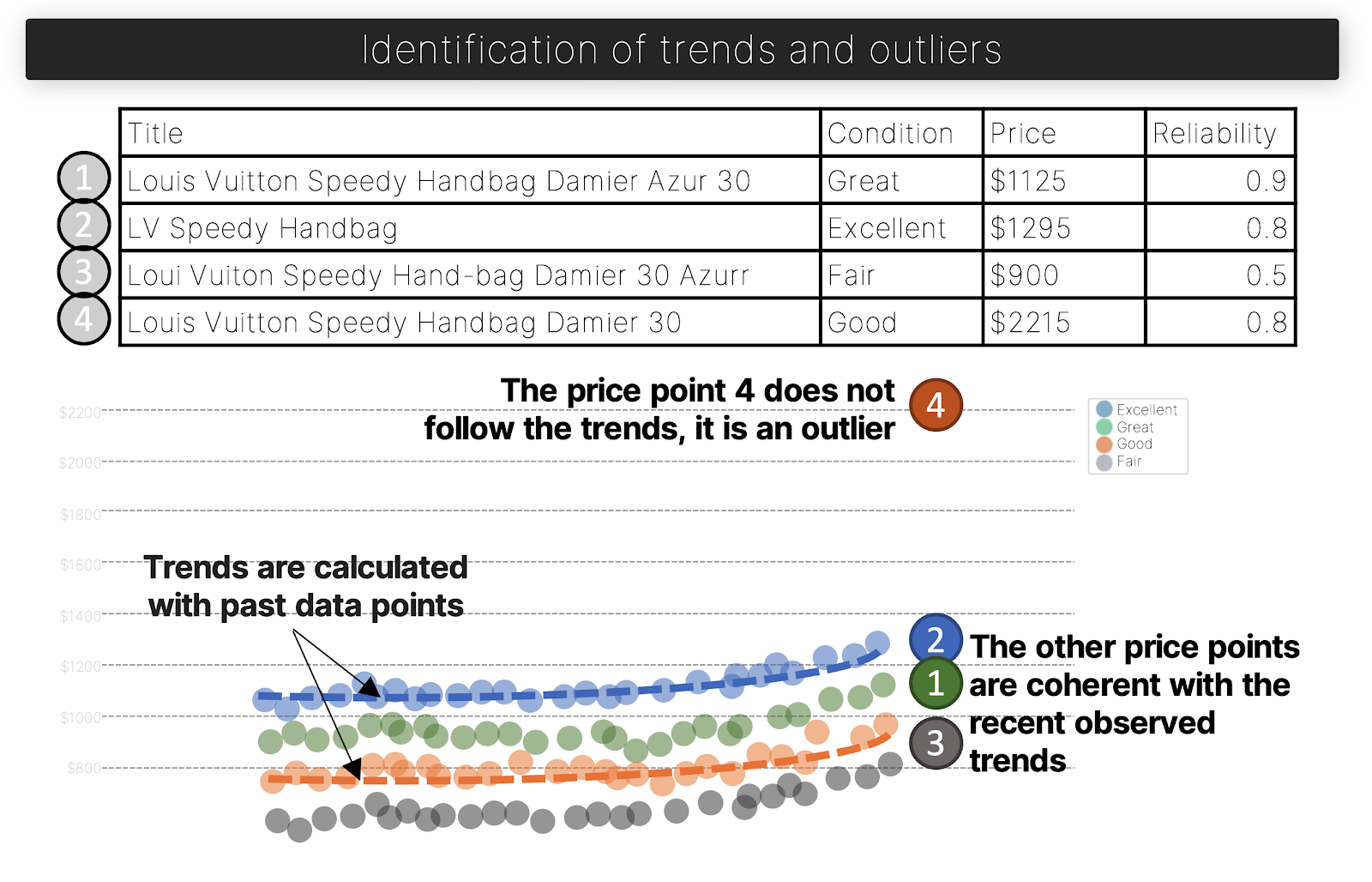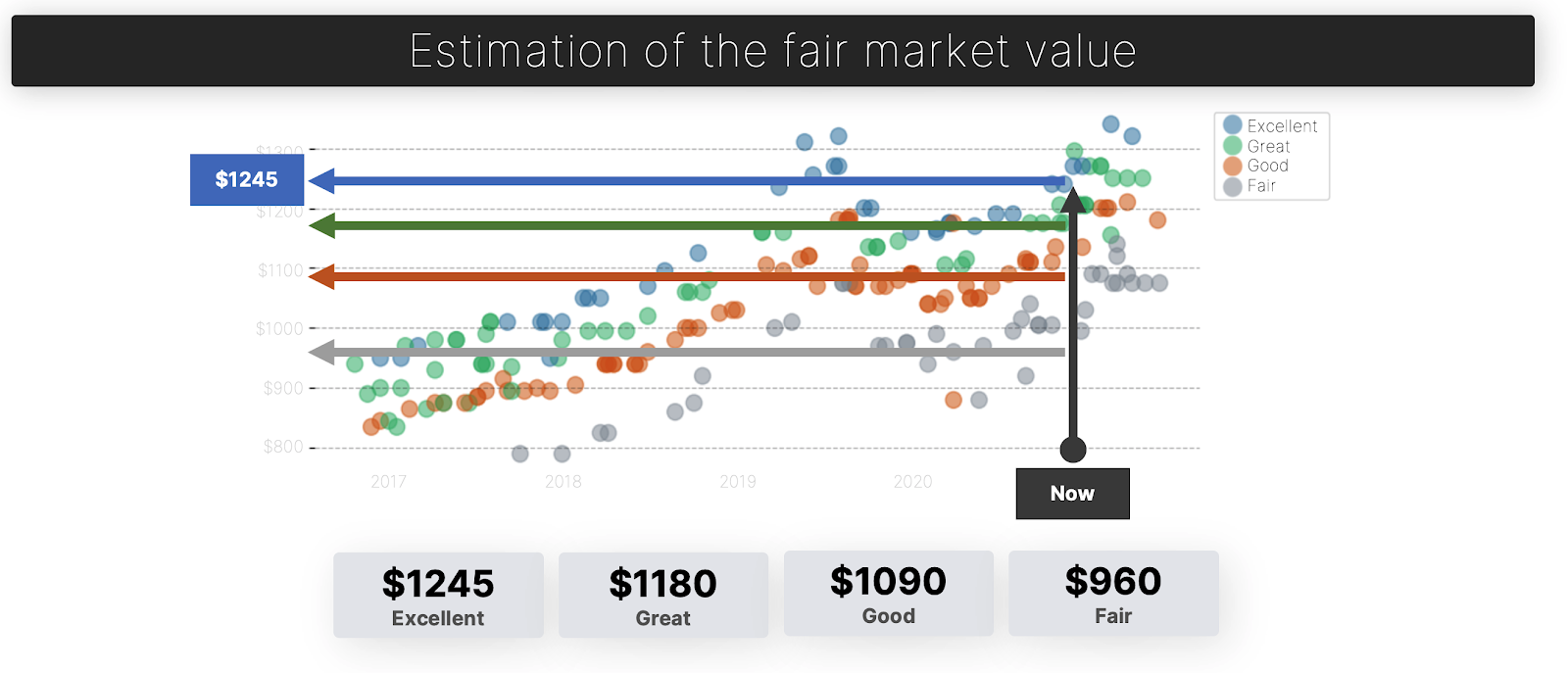Introduction to our automated pricing solution
Introduction
Behind the Resale App, we have developed a unique pricing technology to collect, clean, and analyze data, and evaluate prices of secondhand designer items.
Currently, businesses manually estimate the current fair market value by visiting different secondhand websites and marketplaces. Searching and collecting multiple price points for a specific item is a time-consuming process, and even with taking the time to do so, the estimated results may not be close to the real fair market value.
We have developed smart algorithms to compute the fair market value accurately and instantly. Each week, we collect millions of data points for a collection of 35K handbags and 40 top designers. The data includes price, condition, popularity, and other metrics we use to refine our algorithms.
Read this article to discover more about how we automate pricing.
Data Collection & Cleaning
Each week, we collect millions of data points from Google Shopping, TheRealReal, Rebag, Fashionphile, and other marketplaces with various business models, sizes, and niches. From large marketplaces to small vendors and peer-to-peer marketplaces (P2P) to managed platforms, we get a full representation of the luxury fashion market in North America.
Because of the diversity of the data sources, the structure of the collected data varies from one source to another. We transform this data, depending on the source, to make it readable for further analysis.
 The data includes price, condition, popularity, and additional information we use to refine our algorithms: title, description, image, size, color, material, etc.
The data includes price, condition, popularity, and additional information we use to refine our algorithms: title, description, image, size, color, material, etc.
In parallel, we have developed a unique database, storing the unique product specifications of thousands of designer items. We are then able to recognize a product by its title, description, or images and are also able to translate any qualifying adjective or term into the right one.
How does Trendful make the magic happen?
We use natural language processing and image recognition that leverages machine learning to make smart algorithms specifically tailored for the luxury market.
Machine learning is a branch of artificial intelligence that provides systems the ability to automatically learn and improve from experience without being explicitly programmed. In other words, Trendful’s algorithms are smart and become smarter every day.
Let’s take an example:
 For you to better understand the process, we have selected 5 lines of raw data for you to review (as shown above). In reality, the raw data doesn’t always look like that - things can get pretty ugly but our algorithms know how to deal with ugly.
For you to better understand the process, we have selected 5 lines of raw data for you to review (as shown above). In reality, the raw data doesn’t always look like that - things can get pretty ugly but our algorithms know how to deal with ugly.
1. Read, extract and transform information into analyzable formats
As mentioned previously, by using natural language processing and image recognition, we are able to extract information such as the color, the size, the material, the style and the condition.

2. Cross-check information
Since the information provided is not always accurate nor precise, we cross-check it. In the example, using the item images and the text, we are able to determine that the condition and the color are incorrectly defined.

3. Cluster and identify models
After cleaning, extracting, and checking the data; we cluster the models together and identify them to give them an exact reference.
It doesn’t matter if the order of the words is not the same or if they are misspelled, our algorithms know how to read them.

4. Give reliability scores
Then, we measure the reliability of each data line. It depends on the data source (managed marketplaces are generally more reliable than peer-to-peer marketplaces) and the accuracy and precision of the data previously analyzed. Later on, this score will help to determine if a price point can be considered or not.
Finally, Trendful has developed methods to convert multiple raw data structures and formats into valuable data.
We have also scaled these methods not only to work on a few dozen data points but on millions. Trendful uses them for not only collecting and cleaning the data but also analyzing it.
Data Analysis
After collecting and cleaning the data, the most popular items may be associated with hundreds of current price and condition data points. We have also stored past data to analyze trends and identify outliers using statistical methods combined with machine learning.
An outlier is a data point that differs significantly from the other observations.
It is well known in the secondhand luxury market, that items might gain, maintain or lose value over time. This can be referred to as asset appreciation or depreciation. For example, in recent years, Louis Vuitton handbags have generally gained in value.
However, considering that Louis Vuitton is redesigning old models into new versions, these bags might reach a price threshold*. To illustrate how Trendful integrates trends to identify outliers, let’s take our previous example and represent the price points.
*Note that some secondhand models might still be valued more than the primary market models.
 With the current data, we can identify the price point 4 as an outlier. Looking at the database, you can notice that it is not any Louis Vuitton Speedy Damier 30 Azur Handbag, but part of the Tahitienne collection. In reality, our algorithms work on larger datasets, which makes the identification of trends and outliers more accurate.
With the current data, we can identify the price point 4 as an outlier. Looking at the database, you can notice that it is not any Louis Vuitton Speedy Damier 30 Azur Handbag, but part of the Tahitienne collection. In reality, our algorithms work on larger datasets, which makes the identification of trends and outliers more accurate.
If in the future, the prices were to reach a threshold, the model would adjust by itself. The next time we analyze the data, it would take into consideration the new model and automatically detect new outliers that are abnormally distant from the new trend.
Our algorithms obviously take other parameters into consideration. First, trends are not necessarily linear but might be seasonal or impacted by events (i.e. Black Friday). Second, depending on the data source and data clarity, we have given a reliability score to each data line that plays into the process of outlier identification.
After having analyzed new trends and removed outliers, we can compute current fair market values for many models. Considering that the price of an item depends on the condition, we compute the fair market value for each of the four conditions:
- Excellent
- Great
- Good
- Fair
During the data cleaning, we have reevaluated the condition of the item based on the condition information, the description and/or the images using natural language processing and image recognition. In addition to this step, we use trends once again, to understand how vendors describe the condition and price the item accordingly. Indeed, some vendors don’t make much distinction in price even though the condition is not the same while others do price more according to condition.
 Despite the fact that the evaluation of the condition is subjective, our algorithms ensure that estimated resale fair market values fall in a range where most of the businesses will price their item at for this specific condition.
Despite the fact that the evaluation of the condition is subjective, our algorithms ensure that estimated resale fair market values fall in a range where most of the businesses will price their item at for this specific condition.
From your perspective, as a retailer, we have made the Resale App so people have guidance in evaluating the condition of their handbag. It helps prevent a bad evaluation of the condition and allows us to give the right offer to your customers!
Conclusion
Congratulations, you have made it to the end! You are now more familiar with how we automate pricing. A takeaway would be that our algorithms are continuously adjusting themselves so we provide you and your customers with the most accurate fair market values and offers.
As we collect data and our algorithms get smarter, we will not only compute the current fair market values but also predict them. Trendful’s mission is to help you in your daily operations but also to give you confidence in growing your business by increasing your visibility on the market.